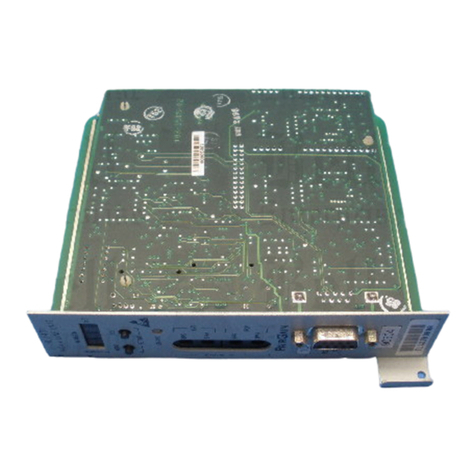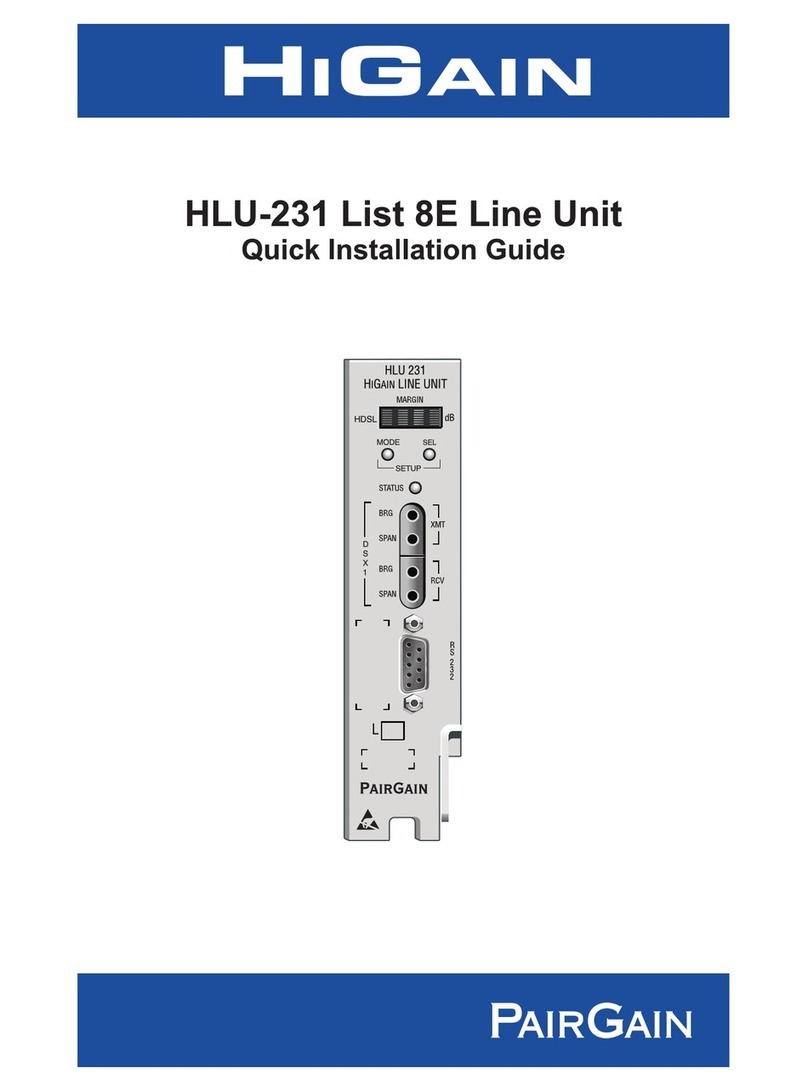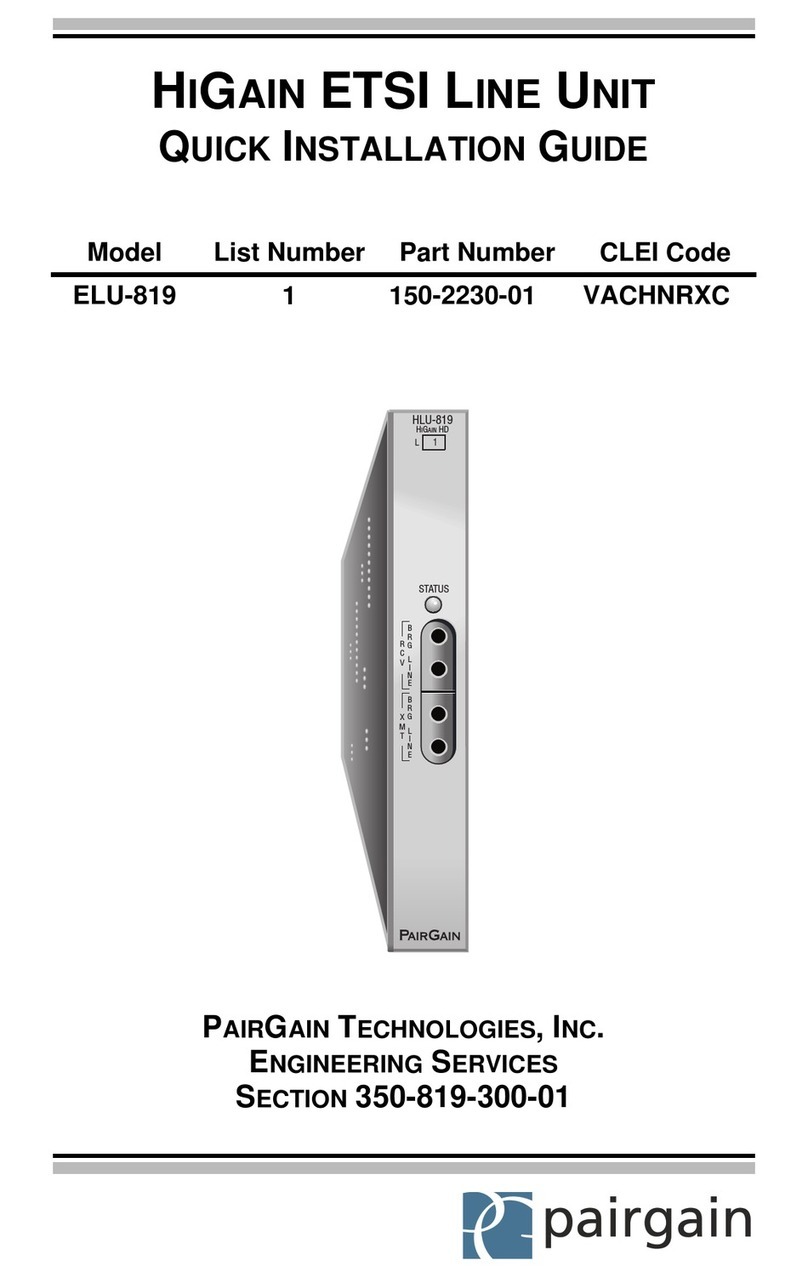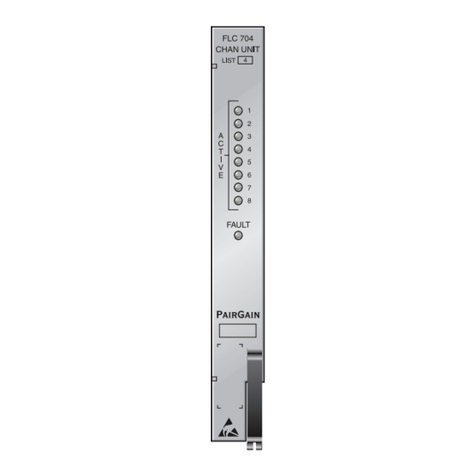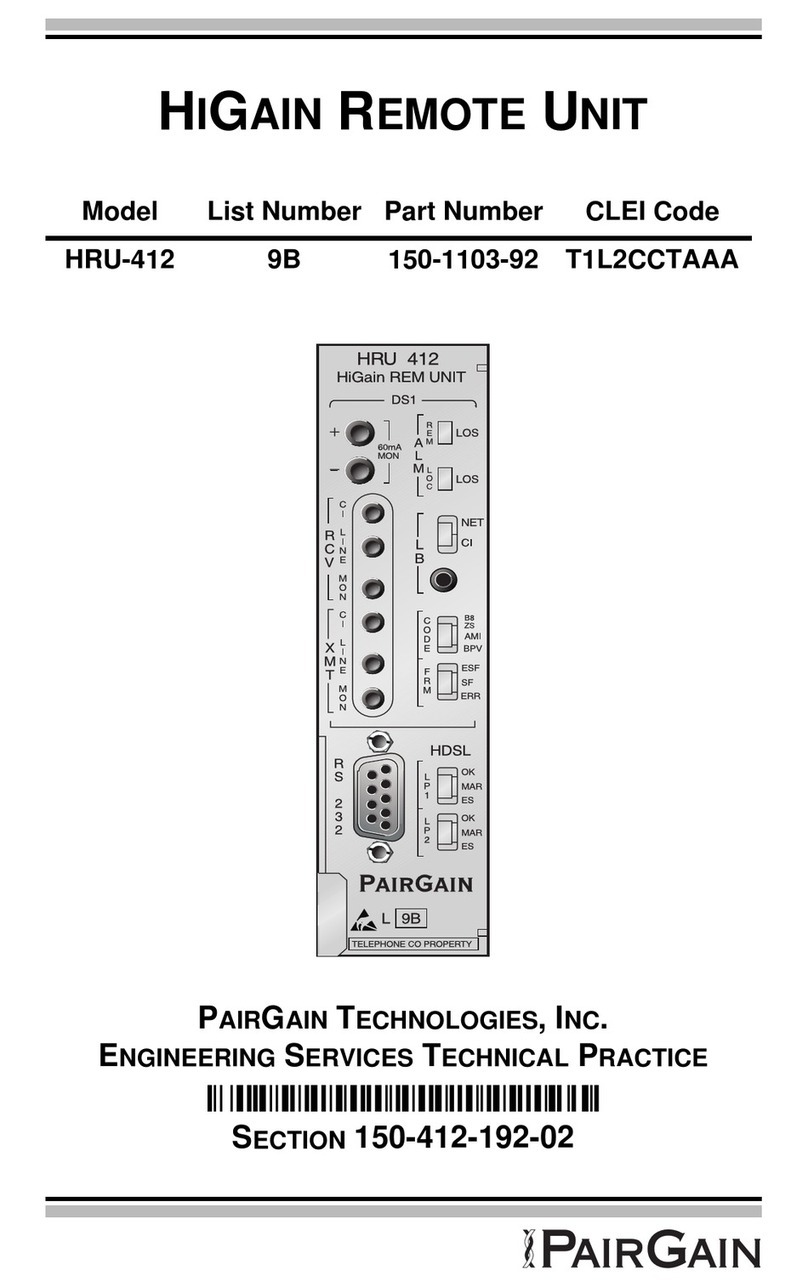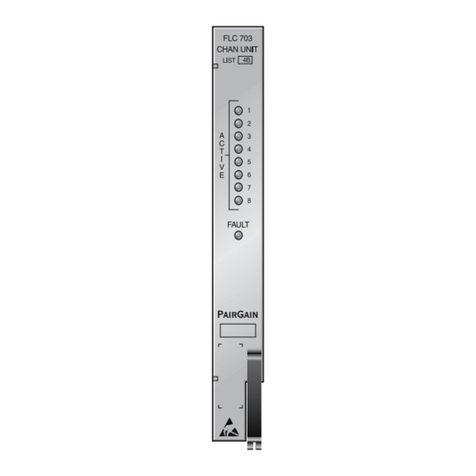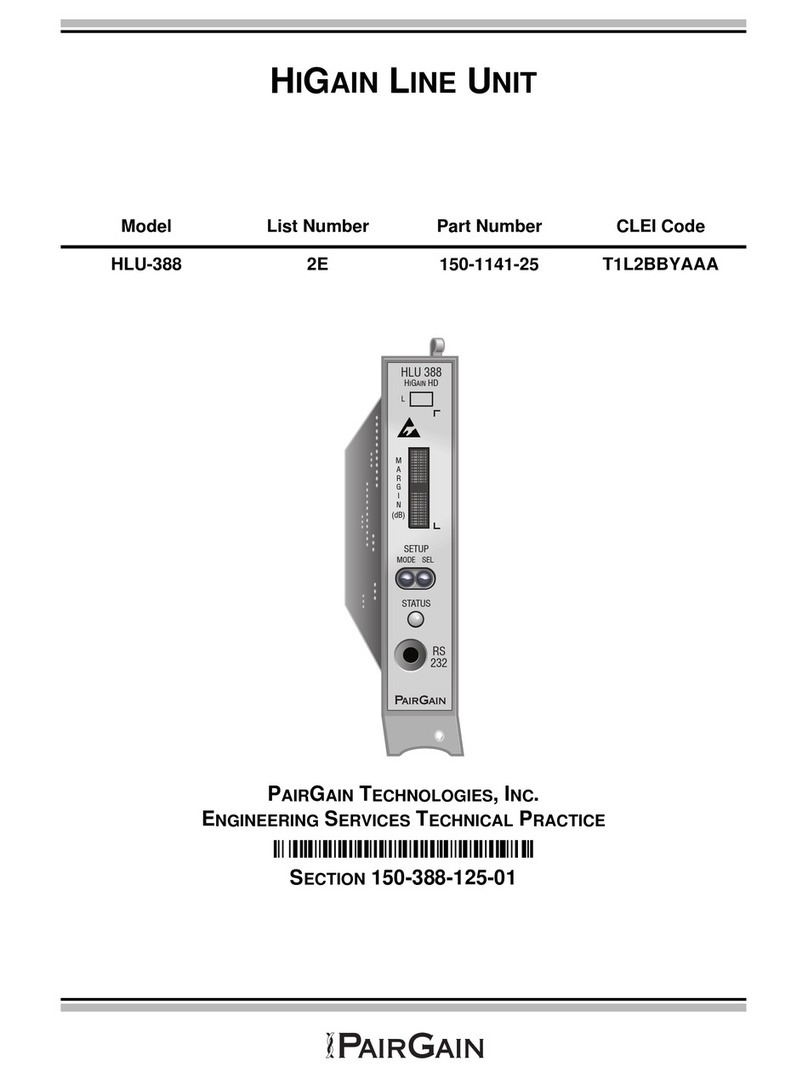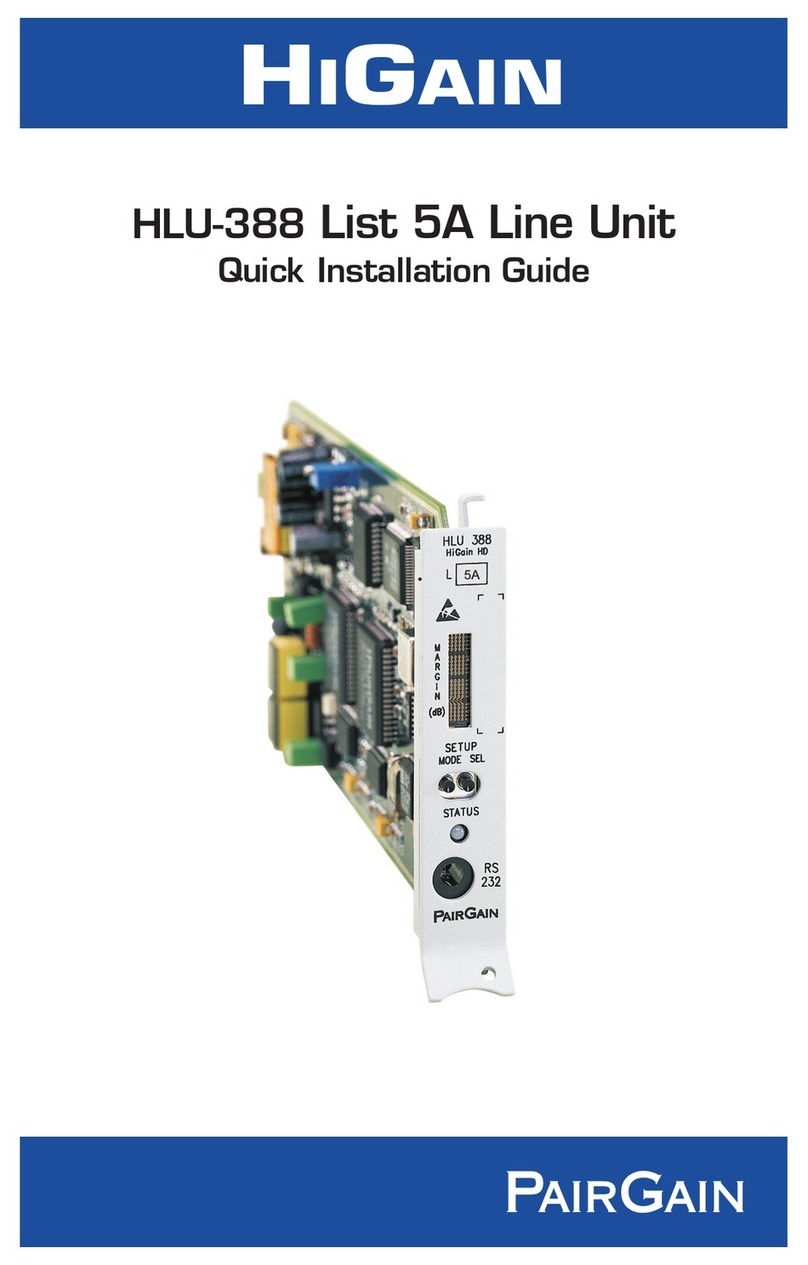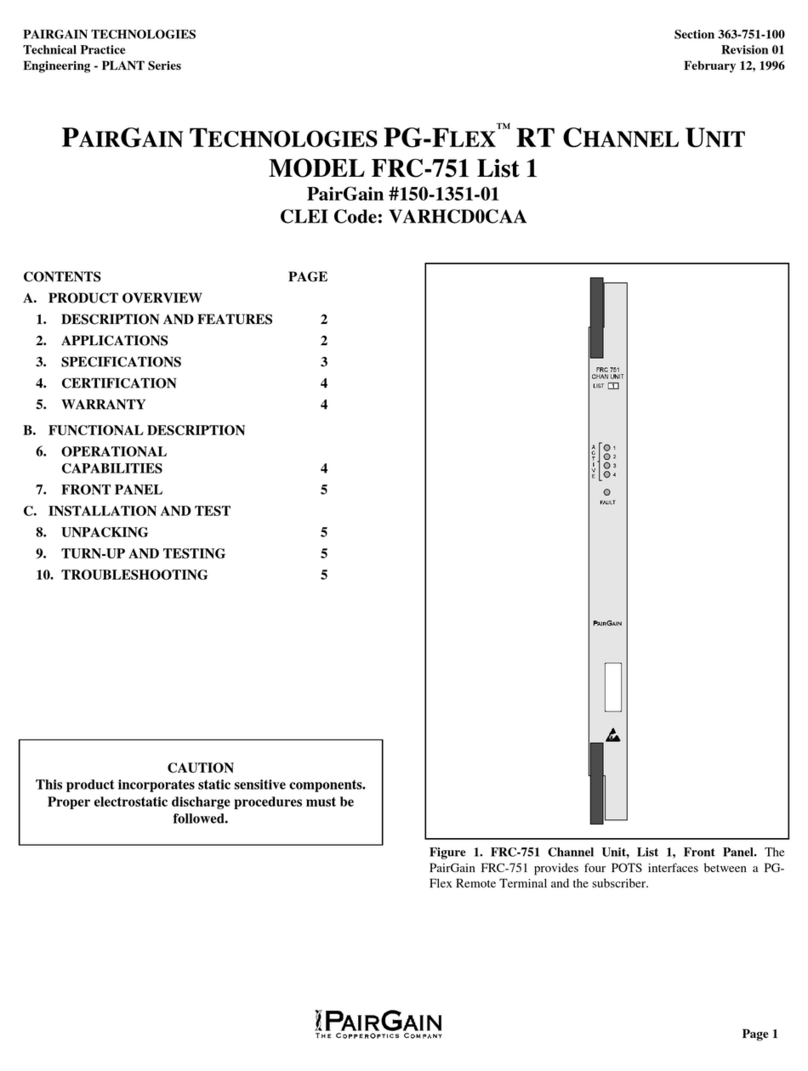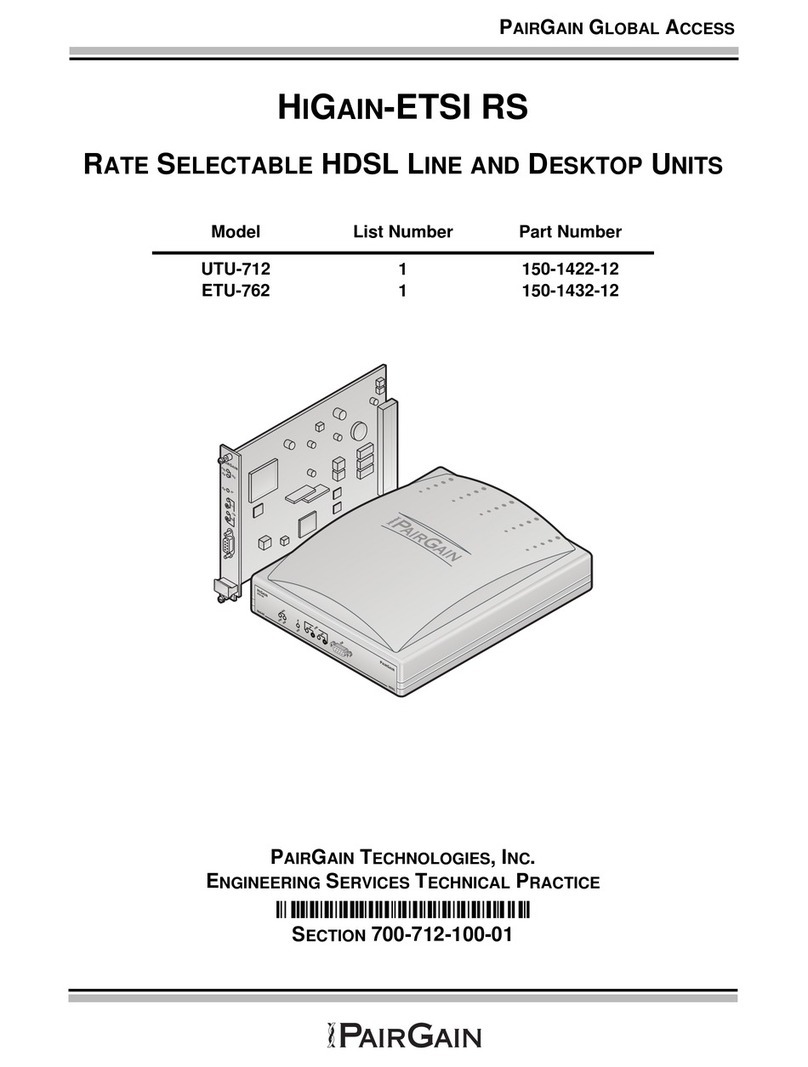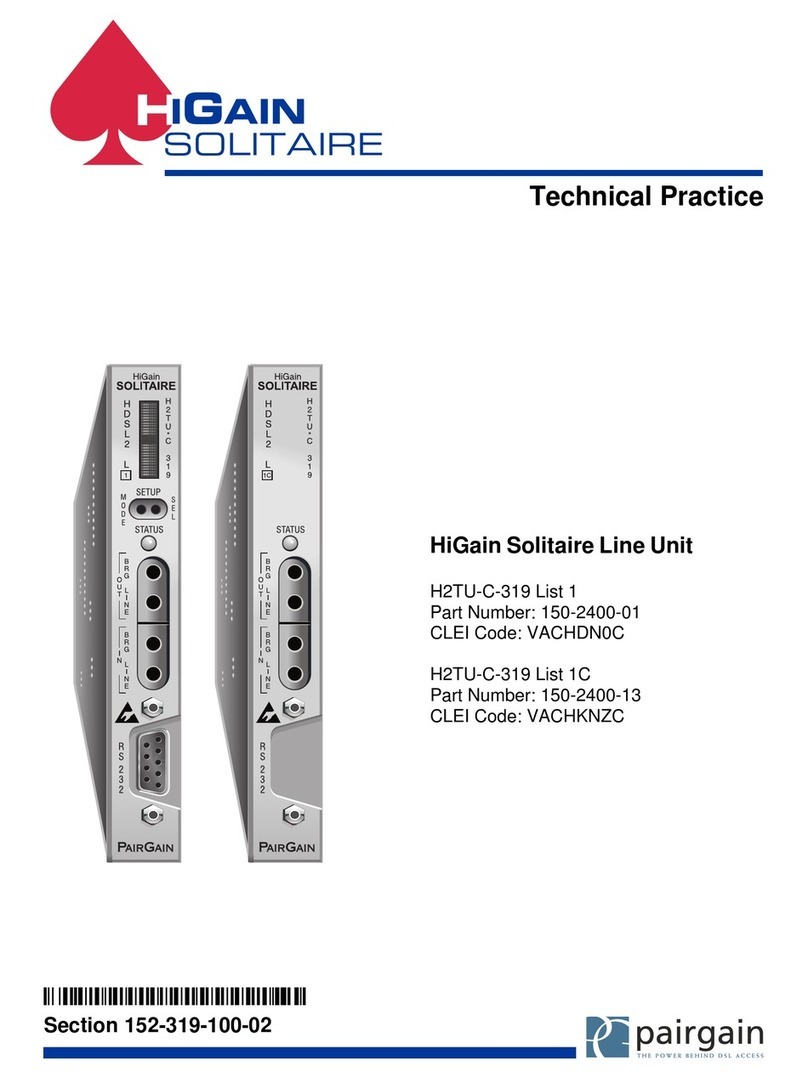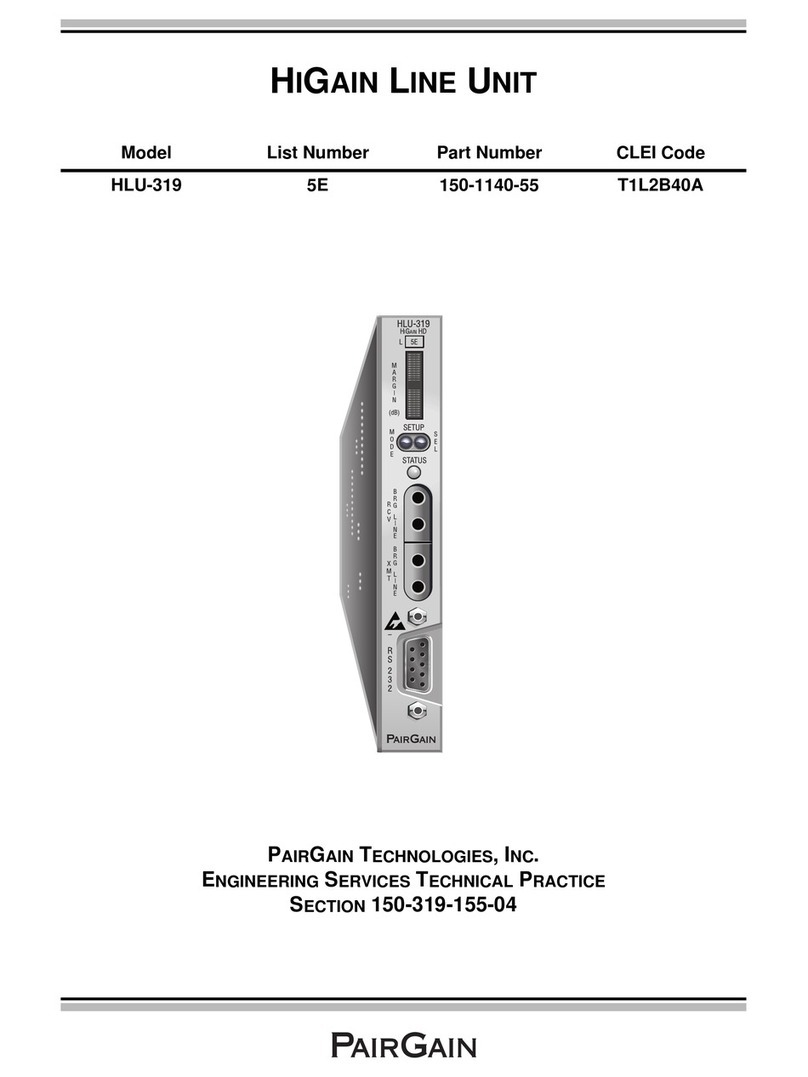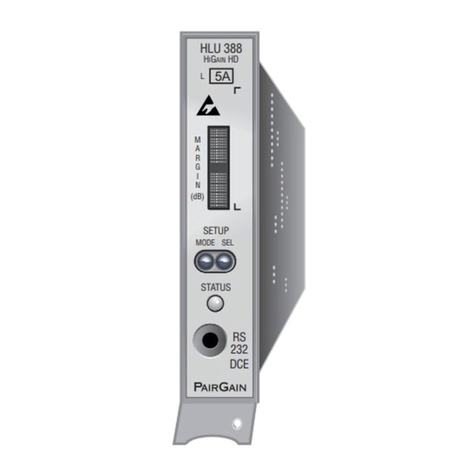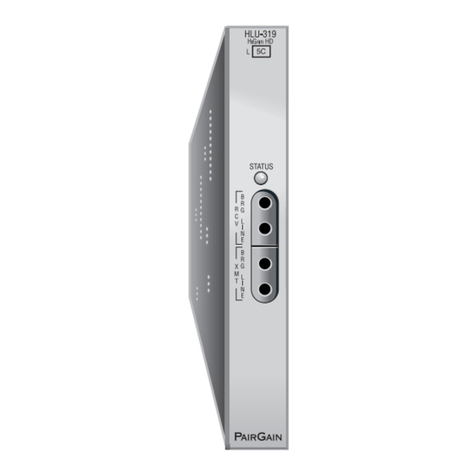
Section 150-231-106
Revision 05
Page 8
7. SYSTEM OPTION SETTINGS
7.01 The HLU-231 contains non-volatile RAM
which stores the system option settings. No
dip-switches or jumpers are required to set the HLU-
231 configuration. The options are set via
pushbuttons on the front panel, through the RS-232
interface, or from the NMA interface and are retained
if shelf power is lost or if the HLU-231 is unplugged.
Table 1 lists the HLU-231 option settings. Note that
only those options enclosed by quotes can be set by
the front panel buttons. All 14 options can be set via
the front panel RS-232 port. Figure 8 shows the
Systems Settings menu used to set these options
from the RS-232 port. The settings with an asterisk
(*) in the second column represent the factory default
settings.
7.02 The SETUP (MODE and SEL) momentary
pushbuttons are used to set the four options
shown in quotes in Table 1 from the front panel. To
initiate an OPTION SETTING mode, depress the
MODE button for one second and release. The
message displayed on the front panel alternates
between the system parameter and its current setting.
Pressing the SEL button steps the display through all
possible settings (one at a time) of the MODE
(parameter) being displayed. After the desired setting
has been chosen, depress MODE. This does two
things. First it updates the current displayed mode to
the setting chosen. It then selects the next
configurable parameter. After the last parameter has
been selected, the displays shows CONF/NO. If the
MODE button is now depressed, none of the changed
parameters are installed. If the SEL button is
depressed, a YES message is displayed and the
chosen changes are installed. In either case the
display returns to its normal mode. The display also
returns to its normal mode, without installing any new
changes, if neither button is depressed for 30
seconds.
7.03 All 14 user options can be set to the factory
default values by pressing the SEL button for
six seconds until the message: “DFLT NO” appears.
To set the default values, press the SEL button while
the “DFLT NO” message is displayed. “DFLT YES”
will be displayed, indicating the factory default values
are now in effect. To terminate the DFLT mode
without setting the factory default values, press the
MODE button or do nothing for 30 seconds. The latter
returns the display to its normal state.
7.04 Pressing the MODE button for 3 or more
seconds causes the display to scroll through
the HLU’s software version number, its List #, the type
of frame pattern being received from the DSX-1, the
line code setting of the HLU and all 14 option settings.
See Table 8 for these additional messages. The line
code is the actual DS1 line code being received by the
HLU if the DS1 code is set to AUTO. Otherwise it
simply mimics either of the two DS1 code settings;
AMI or B8ZS.
7.05 The following three user options must be set
with a dumb or smart terminal: CIRCUIT ID,
DS0 BLOCKING and MARGIN ALARM
THRESHOLD.
7.06 The CIRCUIT ID option is set by choosing the
“H” option from the dumb terminal’s main
menu shown in Figure 6. The message “enter circuit
ID # 24 characters max” follows the “H” selection. Hit
the return key after entering the chosen set of alpha-
numeric ID characters. Then chose “C” to confirm.
Note if more than 24 characters are entered, a “beep’
is emitted and only the first 24 characters are
accepted. The ID appears in all HLU screens as
shown in Figures 6 through 13. The ID does not
appear on the HRU screens when the maintenance
port is accessed at the remote unit. Note that the
Circuit ID is not set to its default (all blanks) setting
when the DFLT setting option is utilized.
7.07 To set the DS0 BLOCKING option, first select
the SYSTEMS SETTINGS (“C” choice) from
the main menu. The menu shown in Figure 8 appears.
Now enter the letter “B” shown in parenthesis of the
DS0 blocking selection. The DS0 channels are
blocked or unblocked by entering each channel’s
number. Multiple channels can be selected by
inserting a space between each entry. After all the
new settings have been made, enter “E” for exit and
then “C” for confirm. The new choices are now
installed. If DS0 blocking is invoked in a HiGain
system that has an earlier HRU that does not support
the blocking option, blocking will only occur at the DS1
output of the HLU. The HRU’s DS1 output will not be
blocked. Also, all blocked channels are opened for all
HiGain loopback tests. This allows the standard full
bandwidth T1 loopback tests to be performed.
7.08 To set the MARGIN ALARM THRESHOLD
select “G” from the system settings menu.
Enter the desired minimum acceptable alarm
threshold from the 0 to 15 dB range. This causes a
minor alarm to occur (see paragraph 6.17) if either the
margin on HDSL loop 1 (MAL1) or loop 2 (MAL2)
drops below the selected threshold value. Since the
margin can never drop below 0, choosing “0” for the
margin threshold turns the margin alarm off.

